
Over 65 and Homeless
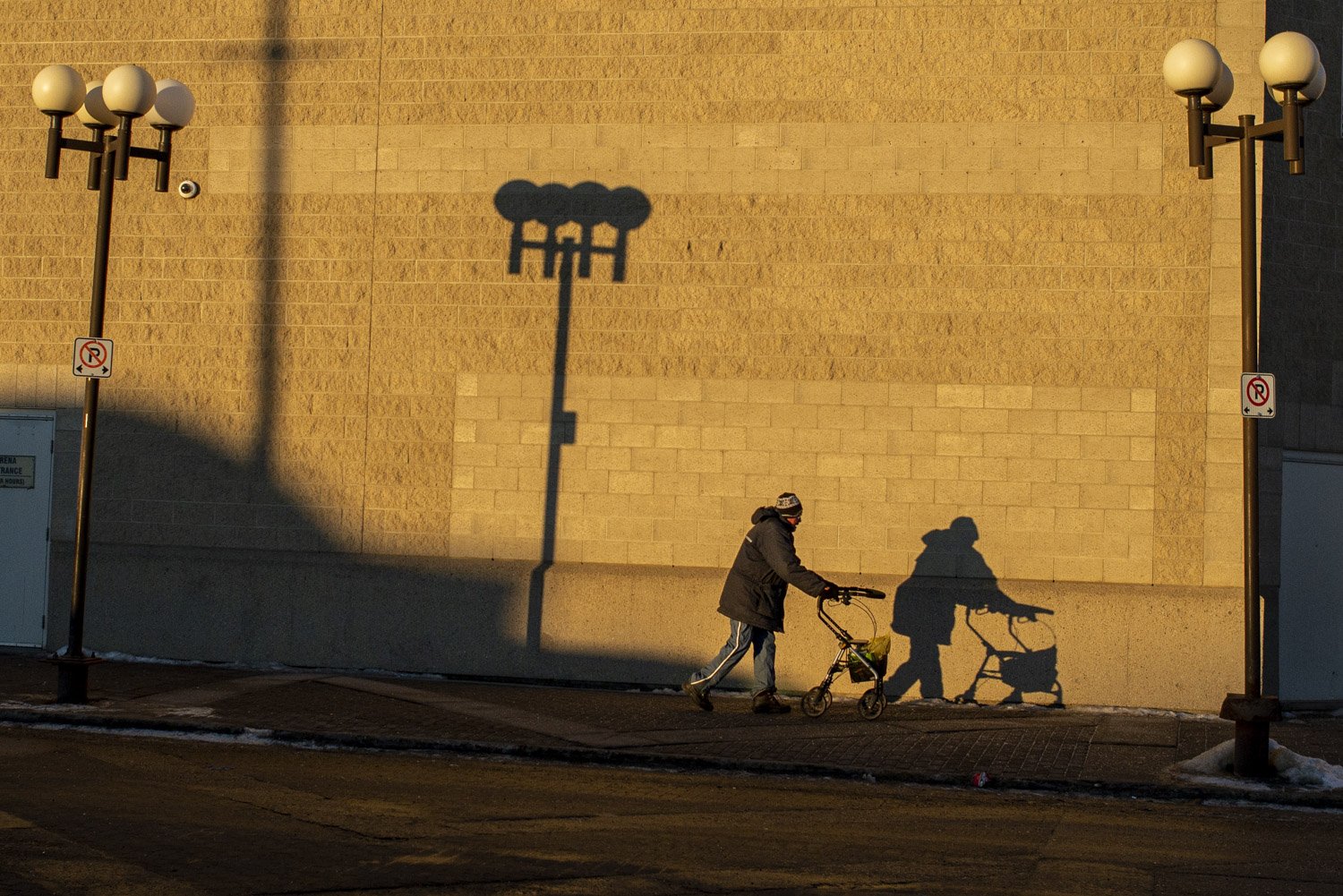
A man and his walker are silhouetted in the early morning light on the wall of a downtown building in Grande Prairie, Alberta.
La silhouette d’un homme et sa marchette est projetée sur un mur en brique tôt le matin dans le centre-ville de Grande Prairie en Alberta.
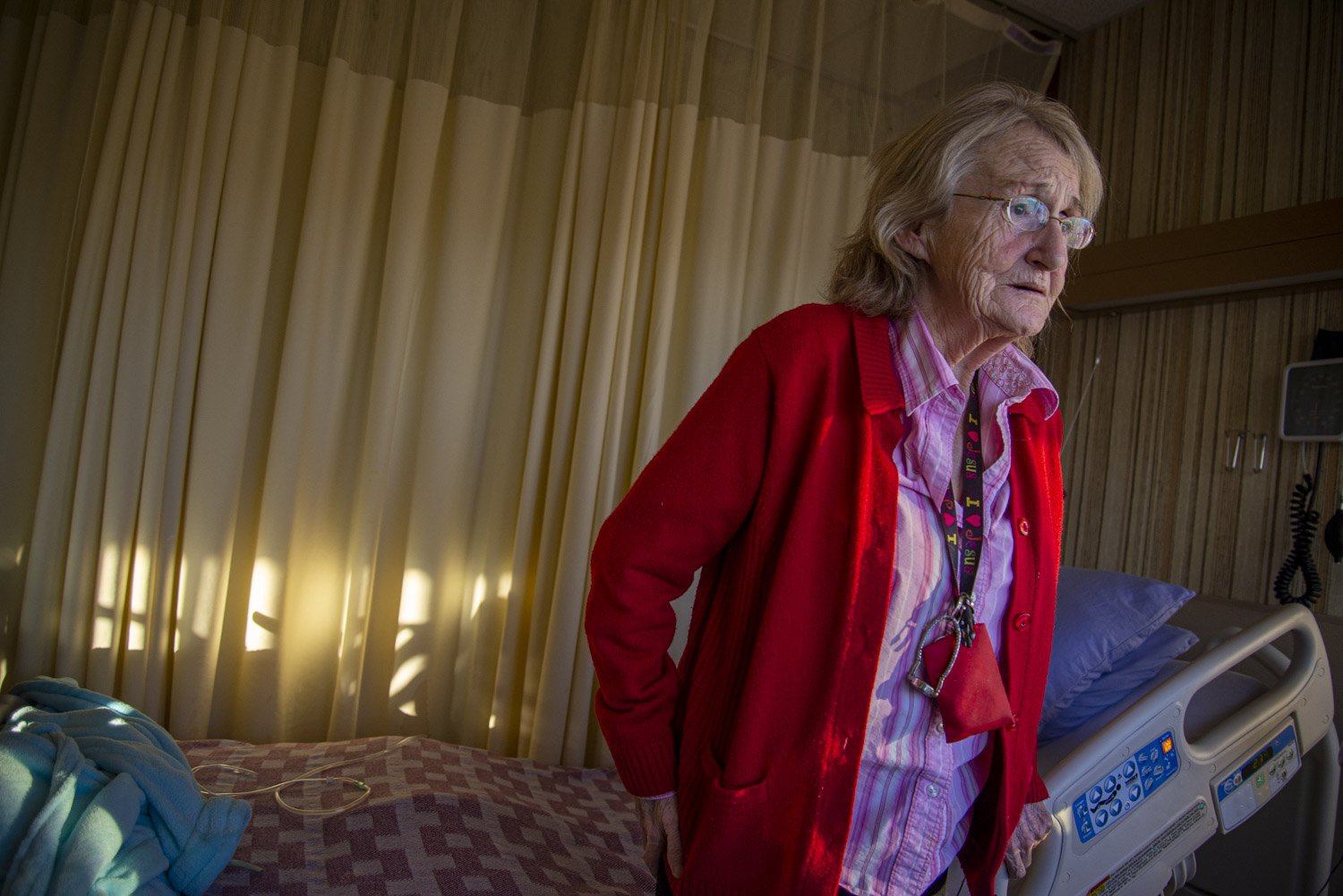
Effie, 68, has been homeless and living at the hospital in Grande Prairie for several months now. Her doctor keeps a close eye on her health and keep monitoring a recurring pneumonia. Her belongings are in storage and she is unsure as to where she will live when she gets out of hospital.
Effie, 68 ans, est sans domicile fixe et vit à l’hôpital à Grande Prairie depuis plusieurs mois maintenant. Son médecin garde un oeil sur sa santé précaire et une pneumonie récurrente. Ses effets personnels sont en storage et elle est incertaine où elle vivra après son séjour à l’hôpital.
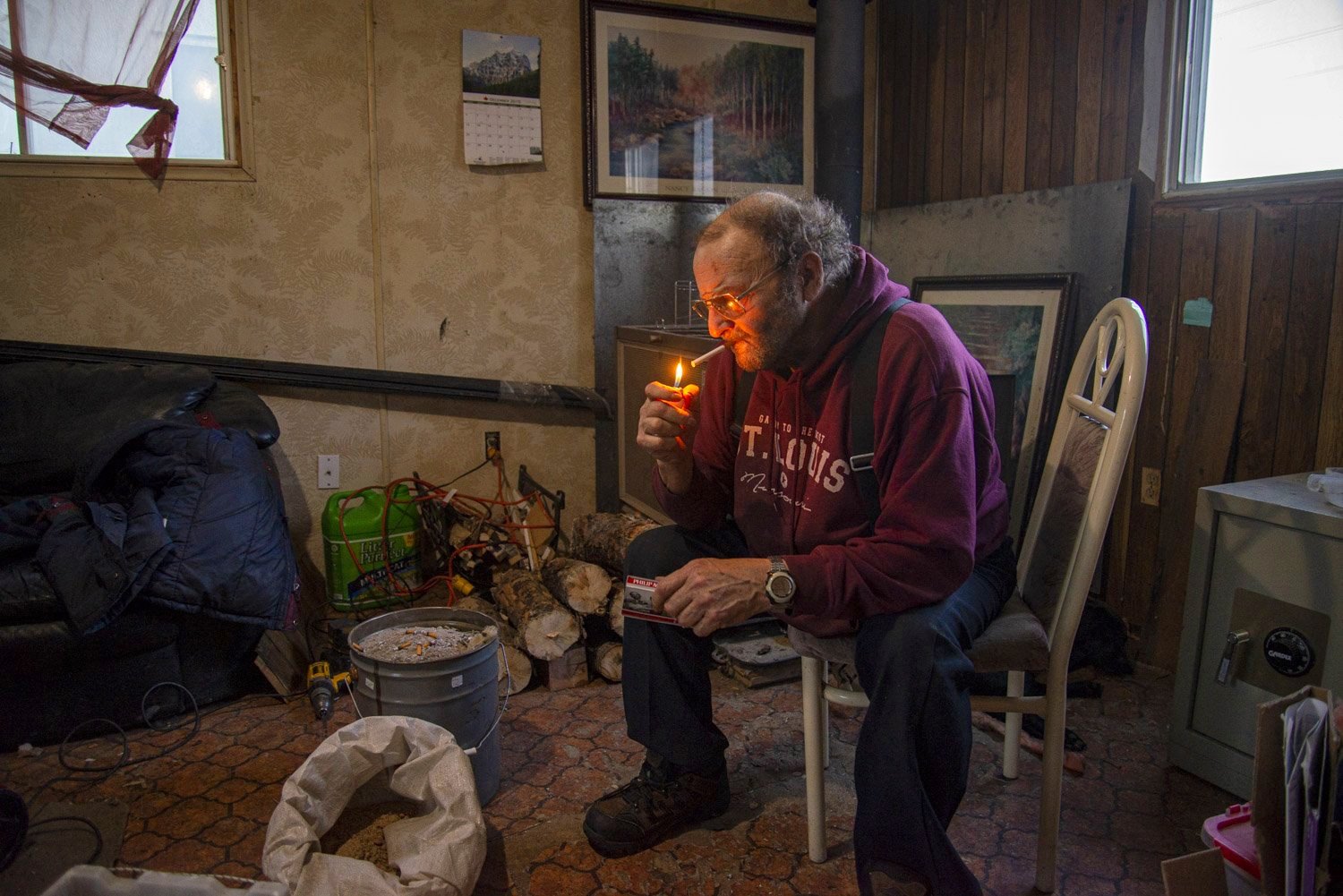
Bill, 70, has been homeless for a few months. He was evicted from the shack he was living in when the owner of the land, where he was staying, passed away suddenly. Now with no fixed address and fragile health, Bill’s future is uncertain. He lives with friends during the coldest months of the year.
Bill, 70 ans, est sans-abris depuis quelques mois. Après la mort subite du propriétaire du terrain sur lequel il avait construit une cabane pour vivre, Bill s’est vue expulsé et s’est retrouvé à la rue du jour au lendemain. Sans adresse et avec une santé fragile, le futur de Bill est de plus en plus incertain.
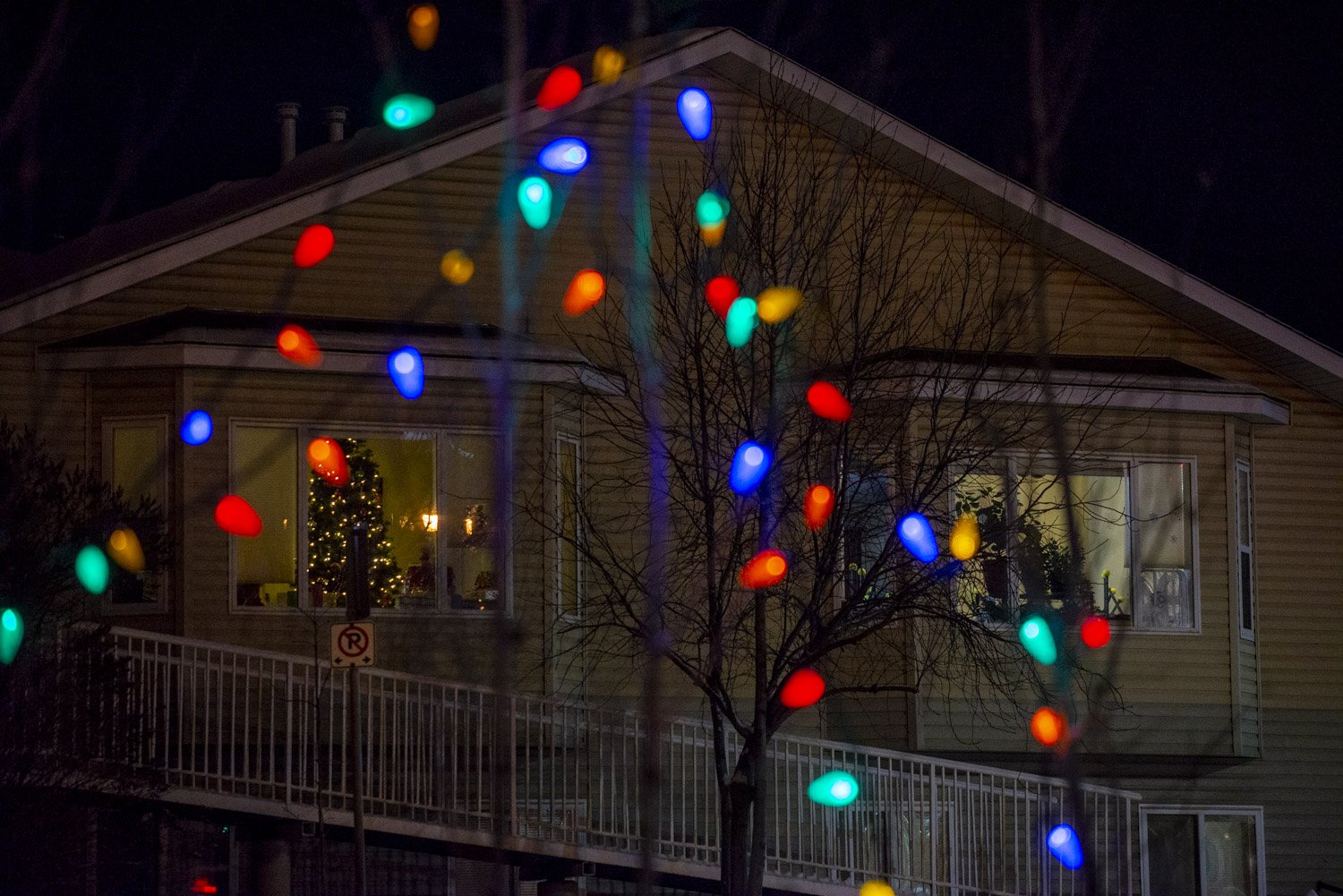
A view of the Elder’s Caring Shelter in Grande Prairie in Alberta, days before Christmas. The shelter, run by a local chapter of the Métis Nation of Alberta, has a vision to provide safe and affordable housing to homeless seniors or elders being at risk of experiencing homelessness. Priority is given to seniors from the First Nations and the Métis Nation in the region.
Le Elder’s Caring Shelter à Grande Prairie en Alberta quelques jours avant Noel. Le refuge qui est administré par la Nation Métis de l’Alberta a pour but d’offrir des logements abordables et sécuritaires pour les ainés prioritairement issues des communautés des Premières Nations et de la Nation Métis de la région.
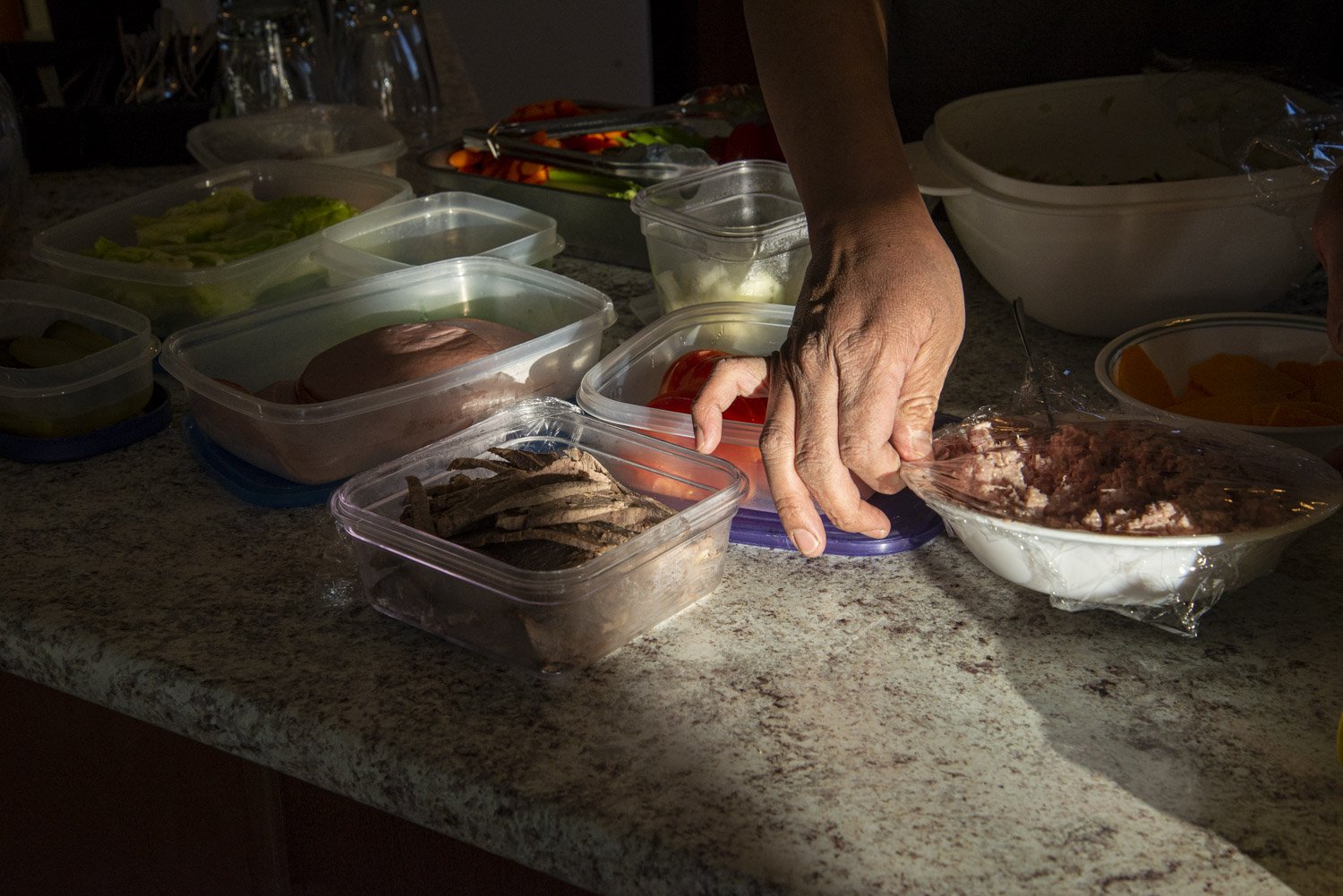
A staff prepares lunch for the residents of the Elder’s Caring Shelter in Grande Prairie, Alberta. The shelter, run by a local chapter (Métis Local 1990) of the Métis Nation of Alberta, has a vision to provide safe and affordable housing to homeless seniors or elders being at risk of experiencing homelessness. Priority is given to seniors from the First Nations and the Métis Nation in the region.
Un employé prépare le repas du midi au Elder’s Caring Shelter à Grande Prairie en Alberta. Le refuge qui est administré par la Nation Métis de l’Alberta a pour but d’offrir des logements abordables et sécuritaires pour les ainés prioritairement issues des communautés des Premières Nations et de la Nation Métis de la région.
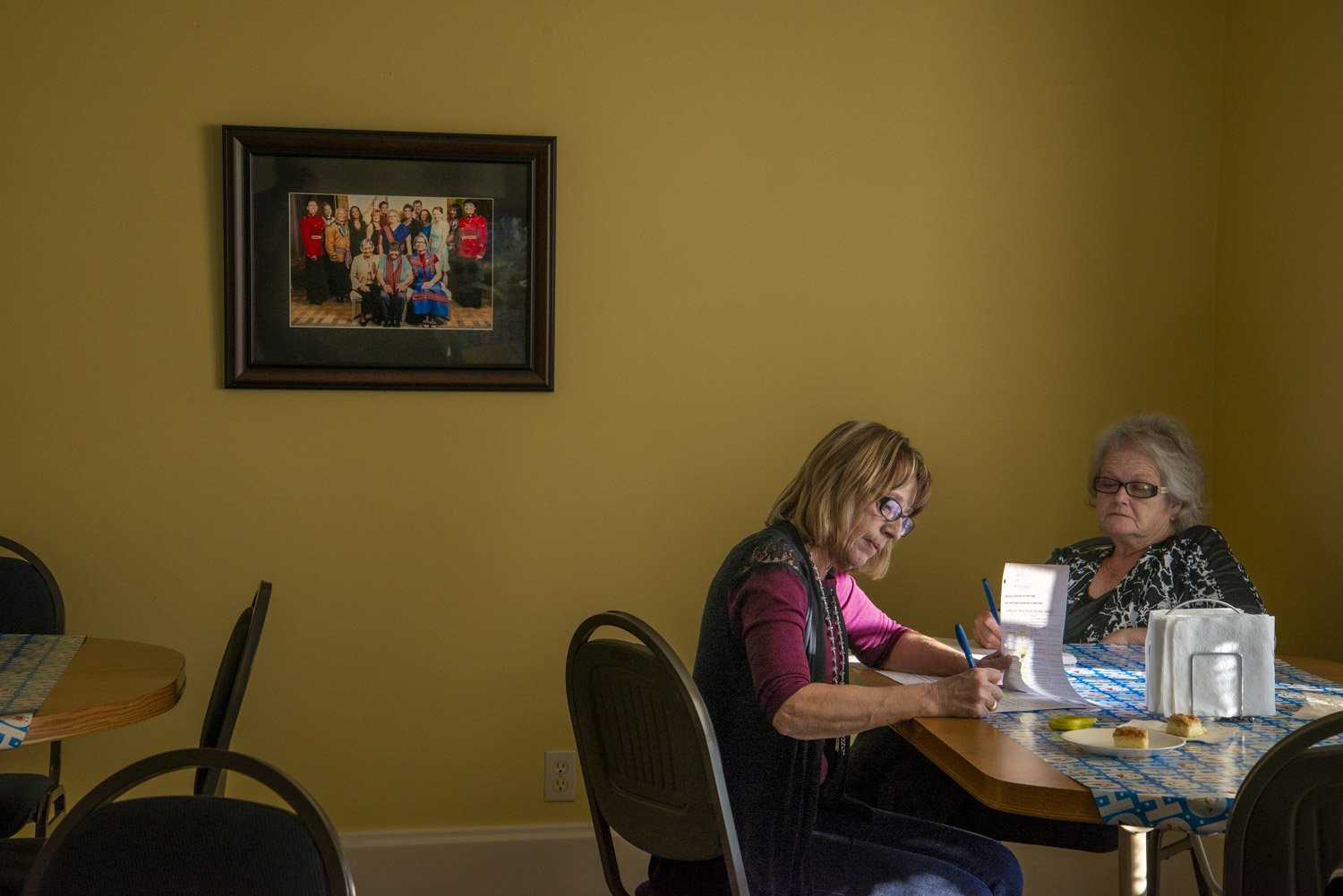
Staff at the Elder’s Caring Shelter in Grande Prairie, Alberta are overwhelmed with applications from seniors wanting to stay at their shelter. The shelter is at full capacity. The Métis Local 1990 and the Métis Nation of Alberta are advocating for a second shelter to be build in the city to help with the growing demand of seniors looking for affordable housing.
Les employés du refuge Elder’s Caring Shelter à Grande Prairie en Alberta sont débordés par le nombre d’applications reçues d’ainés qui veulent séjourner au refuge. Le refuge fonctionne à pleine capacité. Le Local Métis 1990, avec la Nation Métis de l’Alberta, travaillent pour promouvoir la construction d’un deuxième refuge. Cette initiative a pour but d’aider à combler la demande croissante d’ainés à la recherche de logements abordables et sécuritaires.

A resident plays card at the Elder’s Caring Shelter in Grande Prairie.
“I like to think of where I live as a sanctuary. I am very private so I sometimes find it hard to share my living space with others. On the other hand, there is a lot of people that cares about you here and that’s a good thing.” Robin
Un resident joue aux cartes au Elder’s Caring Shelter à Grande Prairie.
“Je vois l’endroit où je vis comme mon sanctuaire. Je suis très réservé, alors je trouve parfois difficile de partager mon espace de vie avec d’autres. D’un autre côté, il y a beaucoup de gens ici qui tienne à nous et ca c’est une bonne chose.” Robin
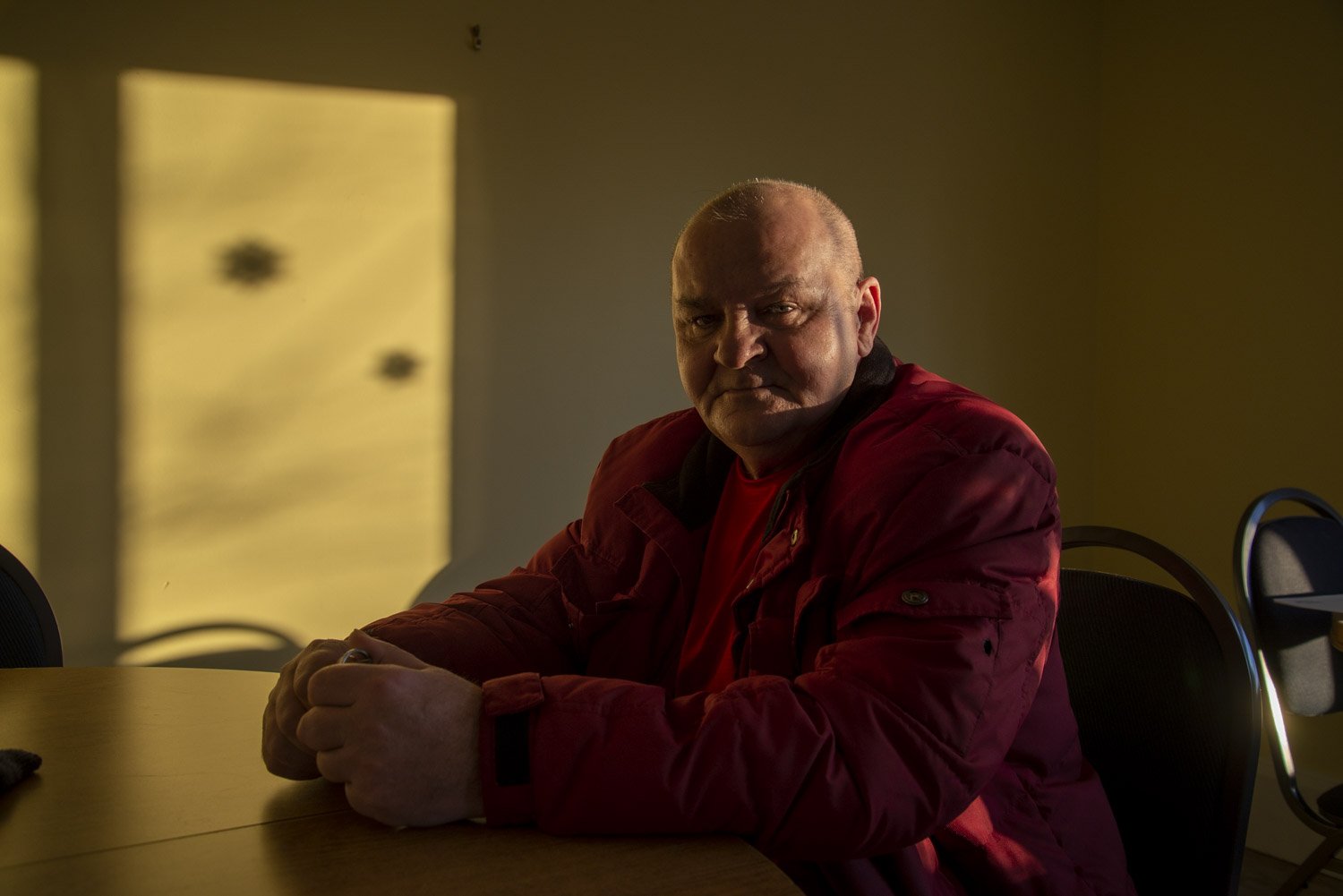
Gibbs poses for a portrait at Elder’s Caring Shelter in Grand Prairie. “After my heart attack I could no longer work full-time, thats when I moved to the shelter for help. I never used to like being around people, now I do. The shelter is a great place to grow old and being respected by others.” Gibbs
Gibbs pose pour un portrait au Elder’s Caring Shelter à Grande Prairie. Après ma crise de coeur je ne pouvais plus travailler a temps plein, c’est la que jai emménagé au refuge pour trouver de l’aide. Dans le passé, j’aimais pas être avec les gens, mais maintenant oui. Le refuge est un endroit où il fait bon vieillir et où les gens nous respectent.” Gibbs
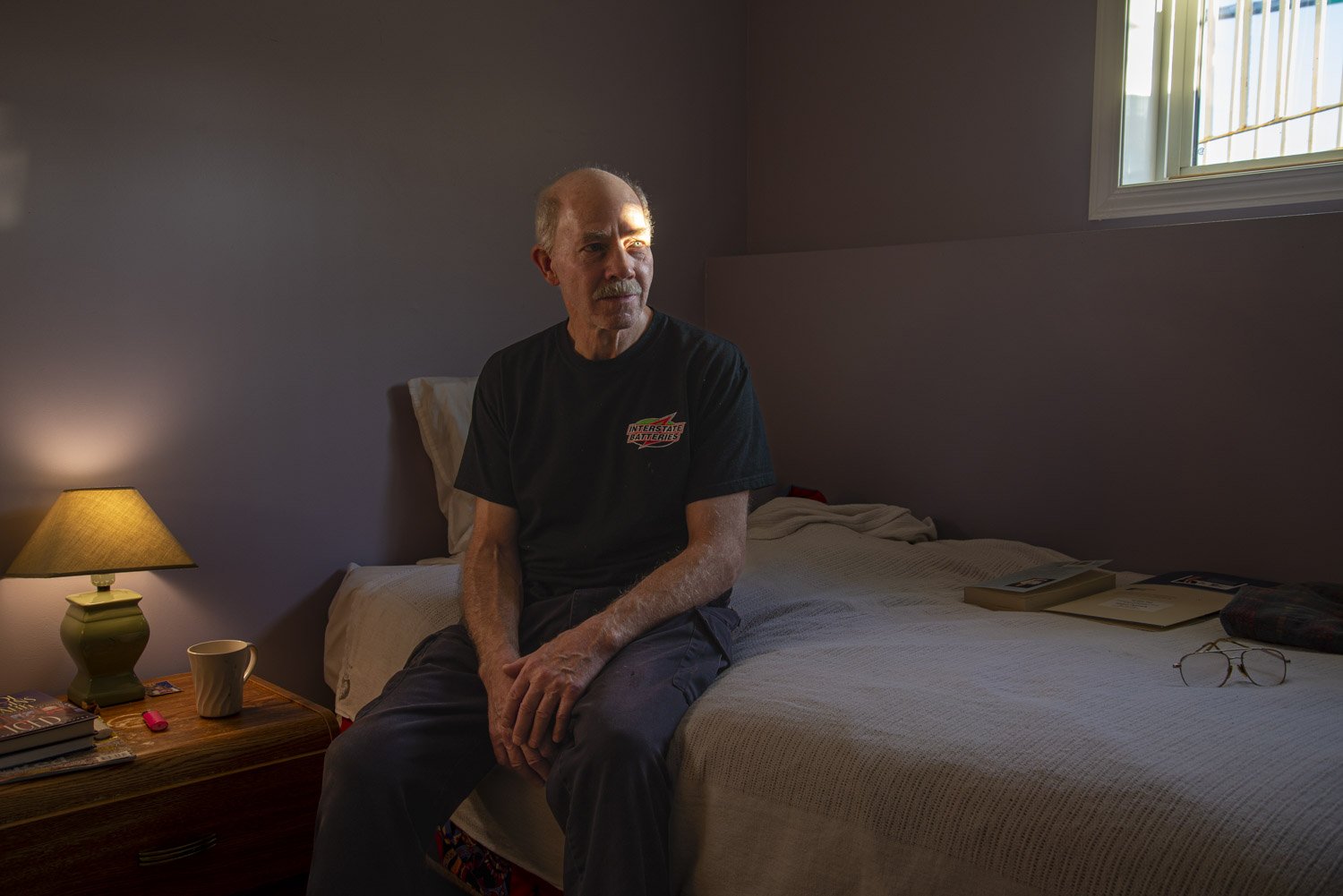
Darryl poses for a portrait in his room at the Elder’s Caring Shelter in Grande Prairie. “After being laid off I struggled financially and it was hard psychologically. The shelter has helped relieve a lot of stress in my life; my stress level is way down. It allowed me to focus and helped me put my feet under me.” Darryl
Darryl pose pour un portrait dans sa chambre au Elder’s Caring Shelter à Grande Prairie. “ Après avoir perdu mon emploi, j’arrivais pas financièrement et c’était trop dur psychologiquement. Le refuge pour aînés m’a aidé à relaxer et abaisser mon niveau de stress. Ca ma permis de focuser et de me remettre sur pied.” Darryl
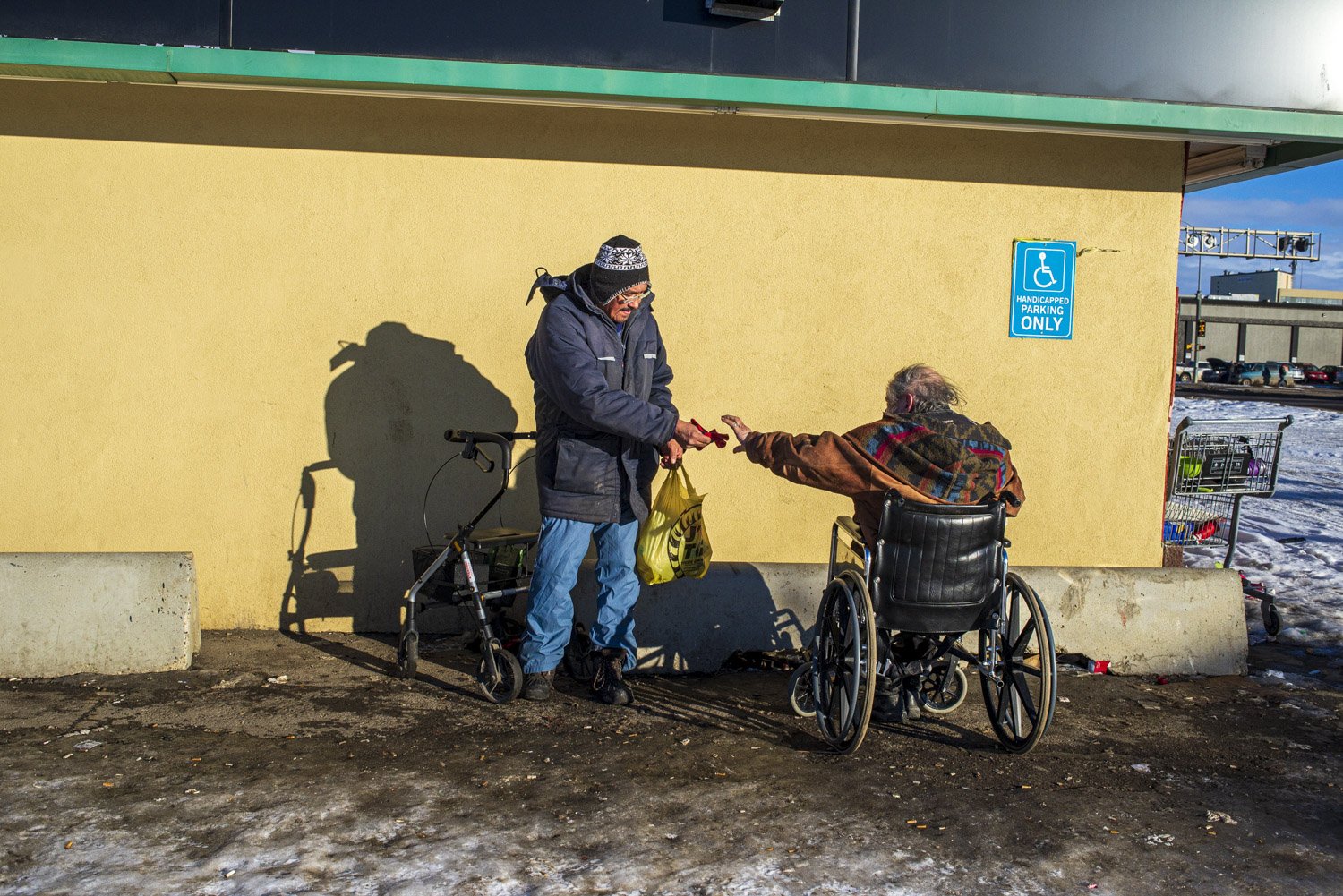
Friends in downtown Grande Prairie, Alberta keeps each other company and help one another how ever they can. Many homeless seniors struggle with poverty and stigmatization and a good proportion of them are from First Nations and Métis Nation in the region.
Des amis dans le centre-ville de Grande Prairie en Alberta s’entraident et se réconfortent du mieux qu’ils le peuvent. Plusieurs ainés sans-abris luttent contre la pauvreté et la stigmatisation et une bonne proportion d’entrent eux sont issue des communautés des Premières Nations et la Nation des Métis de la région.
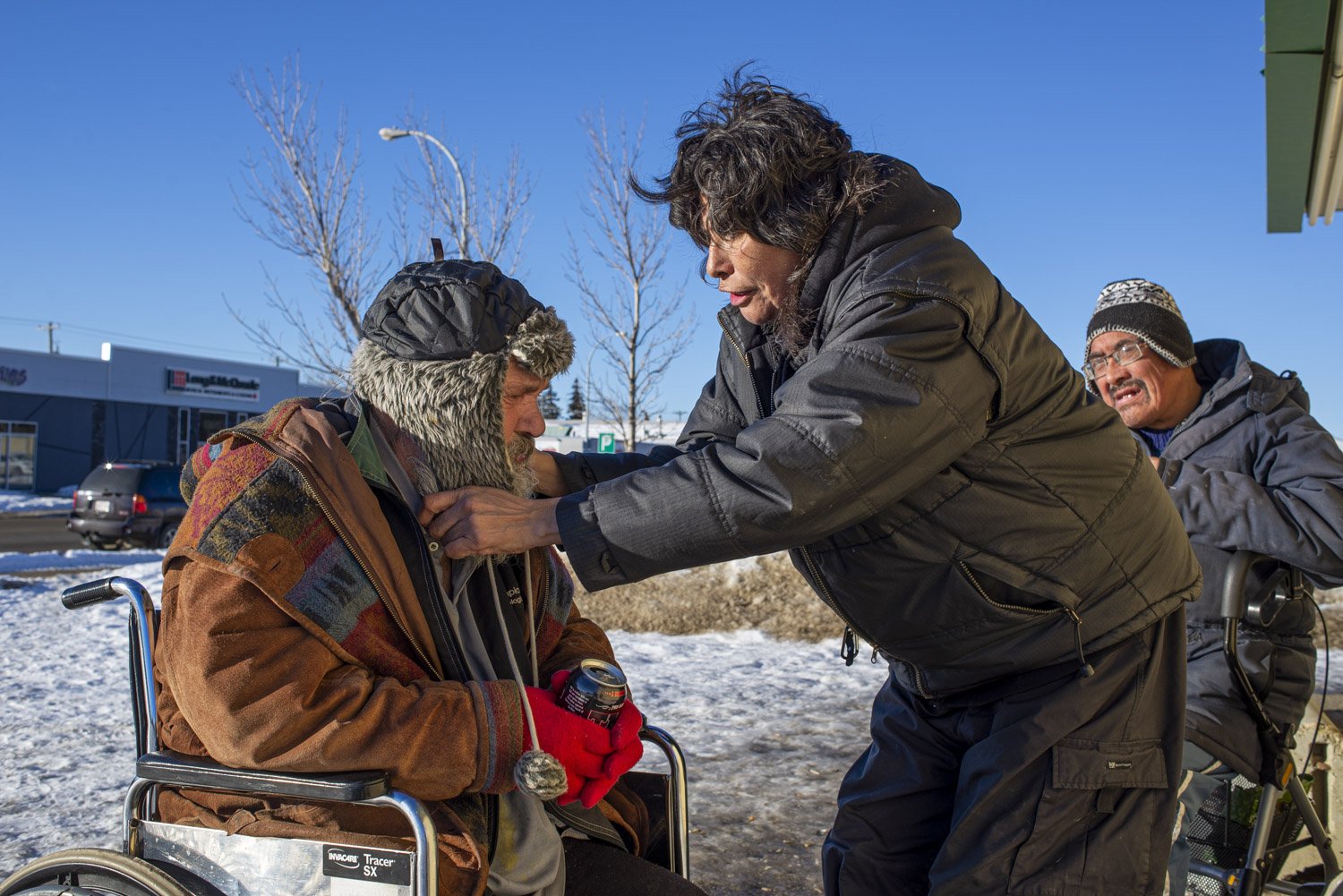
Friends in downtown Grande Prairie in Alberta keeps each other warm during a cold winter day. Many homeless seniors struggle with poverty and stigmatization and a good proportion of them are from First Nations and Métis Nation in the region.
Des amis dans le centre-ville de Grande Prairie en Alberta se gardent au chaud durant une journée froide d’hiver. Plusieurs ainés sans-abris luttent contre la pauvreté et la stigmatisation et une bonne proportion d’entrent eux sont issue des communautés des Premières Nations et la Nation des Métis de la région.
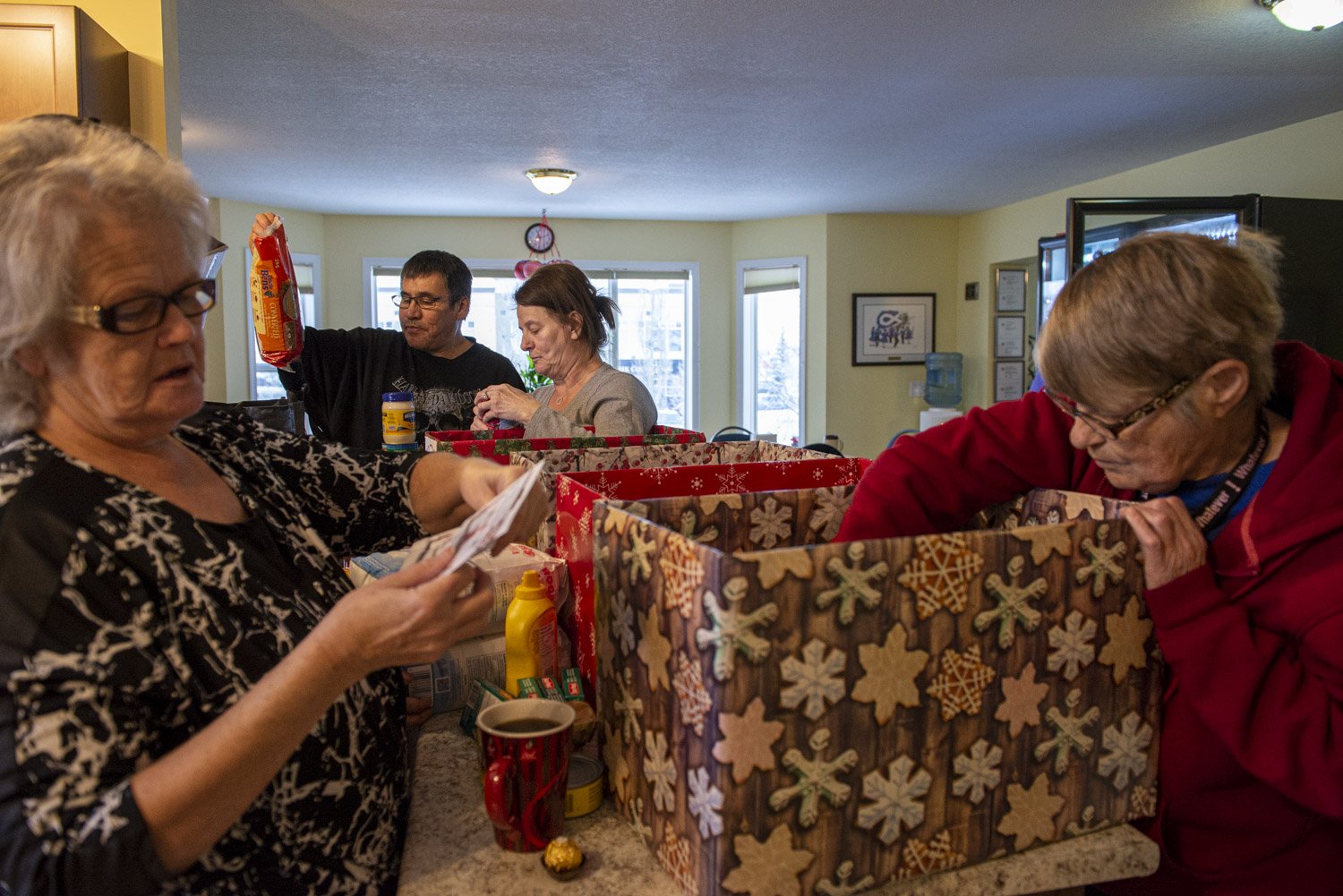
Residents and staff at the Elder’s Caring Shelter unpack boxes full of food donations in preparation for the holiday season.
Résidents et employés au Elder’s Caring Shelter déballent des boites de dons de nourritures en préparation de Noel.
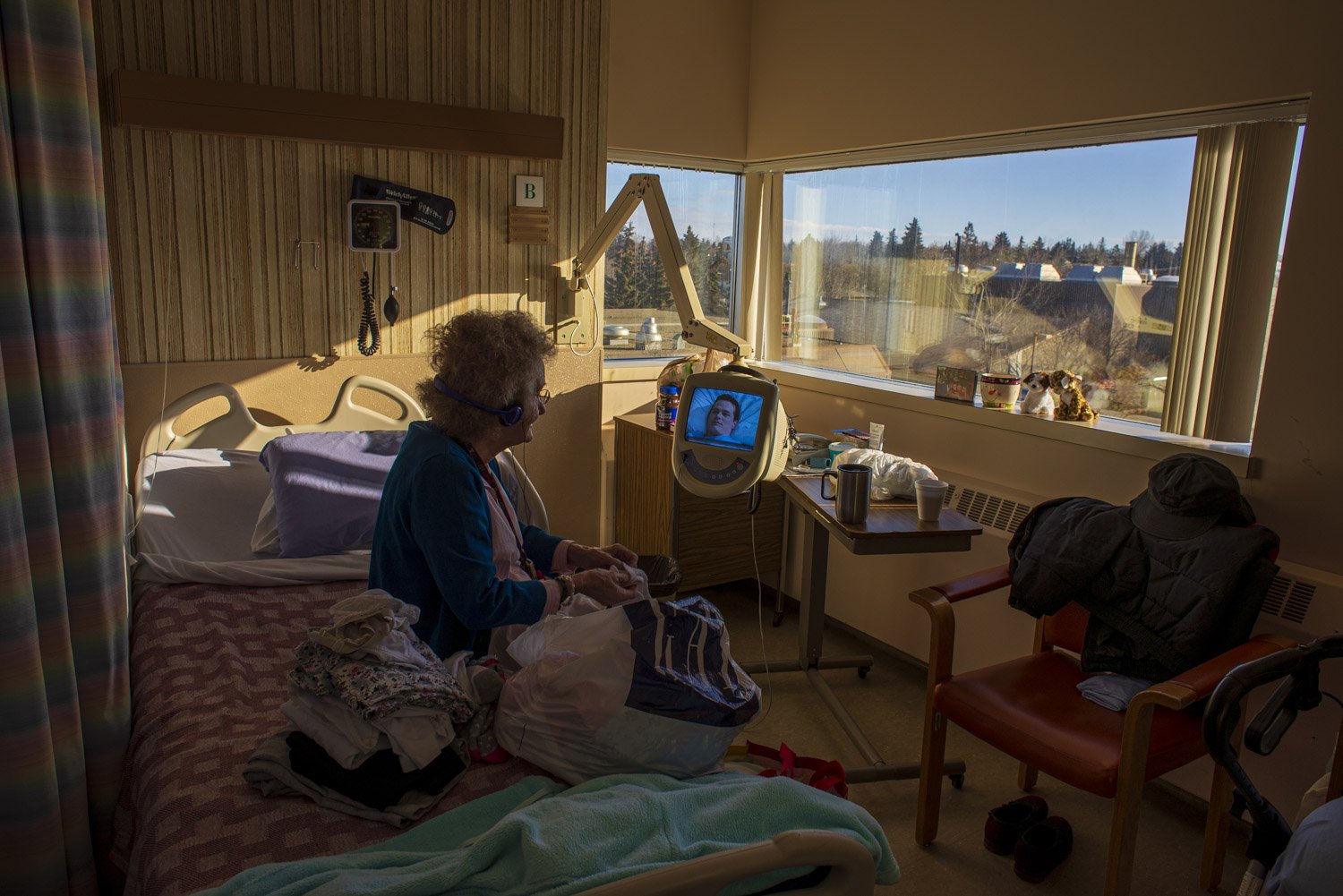
Effie folds her laundry while watching television on her hospital bed in Grande Prairie. Her monthly pension is not enough to cover a $2000 rent: the average price of a seniors housing rental available in the city. "I have no privacy at the hospital and nights can be very long. I can't wait to get out of here, but I have nowhere to go.” Effie
Effie plie son linge sur son lit d’hôpital à Grande Prairie, tout en écoutant la télévision. Sa pension de vieillesse n’est pas assez élevée pour payer un loyer de 2000$: le prix moyen d’un appartement pour ainés disponible maintenant à Grand Prairie. “ J’ai aucune vie privée à l’hôpital et les nuits peuvent êtres très longues. J’ai tellement hate de partir, mais j’ai aucune place où aller.” Effie
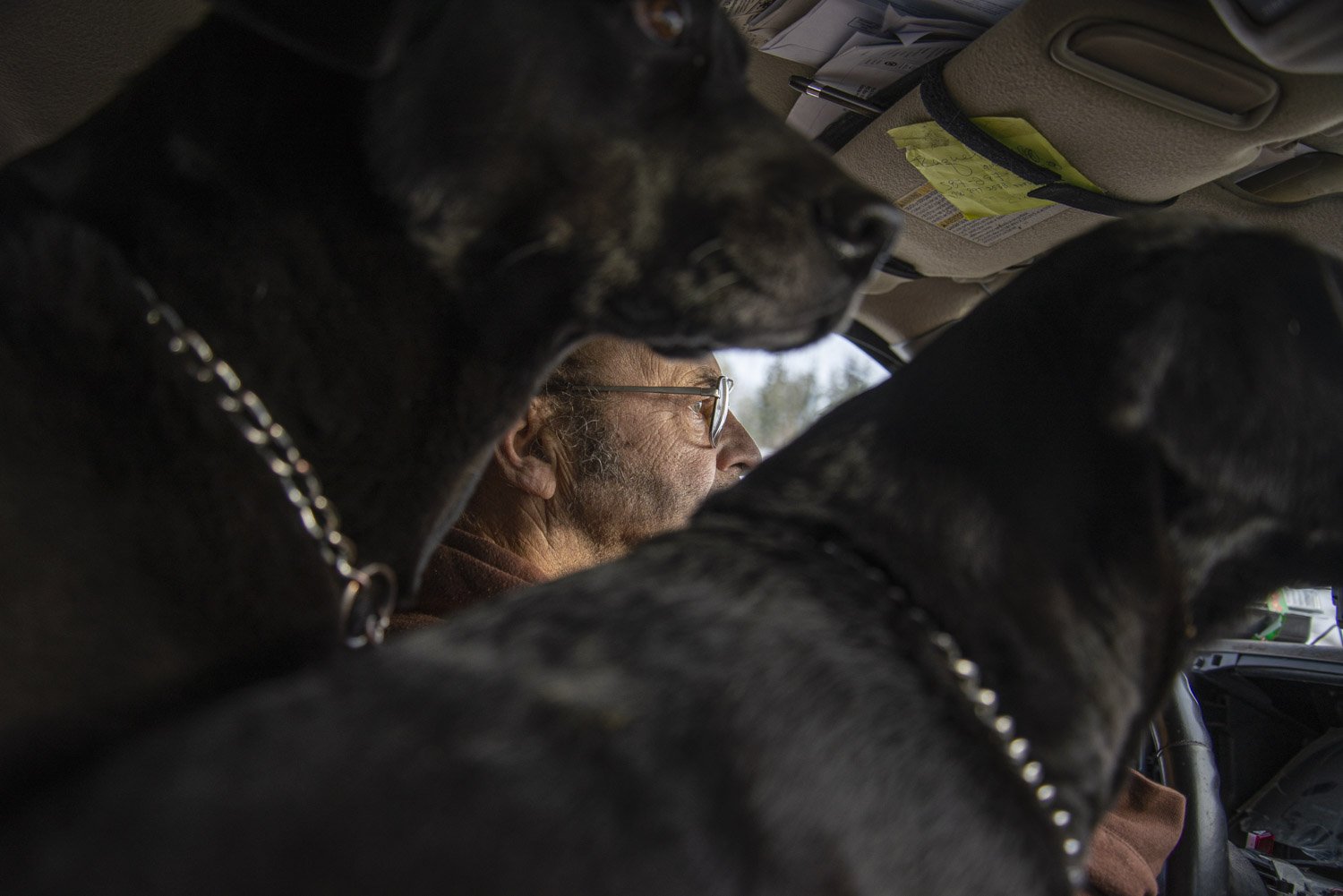
Everyday Bill and his two dogs drive in the city to look for cheap rentals. Bill hopes to find a place he can afford and call home. When spring comes, Bill and his two dogs will probably have to sleep in his truck. “ I can’t stay at friend’s forever, and shelters won’t take my dogs. I want my own space.” Bill
A tous les jours, Bill et ses deux chiens se promènent en ville pour essayer de trouver un logis abordable. Bill espère trouver un chez soi très rapidement. Au printemps, lui et ses deux chiens devront probablement dormir dans son camion. “Je ne peux pas rester chez des amis pour toujours, et les refuges n’acceptent pas mes chiens. Je veux un espace à moi.” Bill
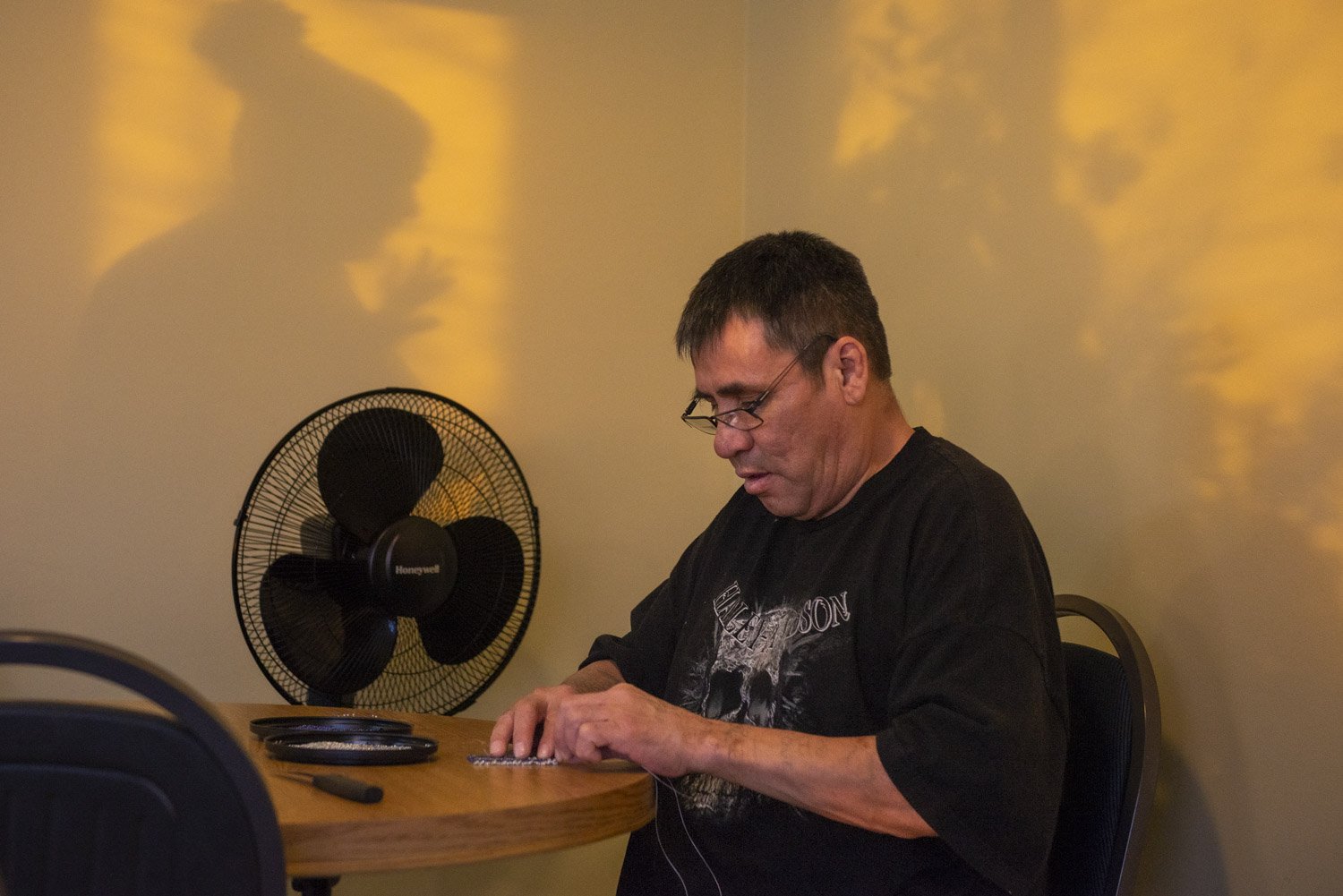
Paul builds a traditional bead necklace that he will sell during the holiday season to raise money in support of the Elder’s Caring Shelter. “The shelter has kept me sober pretty much and helped me have a positive attitude towards life.” Paul
Paul fabrique un collier traditionnel qu’il vendra par la suite pour une levée de fonds au soutien du Elder’s Caring Shelter. “Le refuge m’a aidé à rester sobre et m’aide toujours à voir la vie du beau côté.” Paul
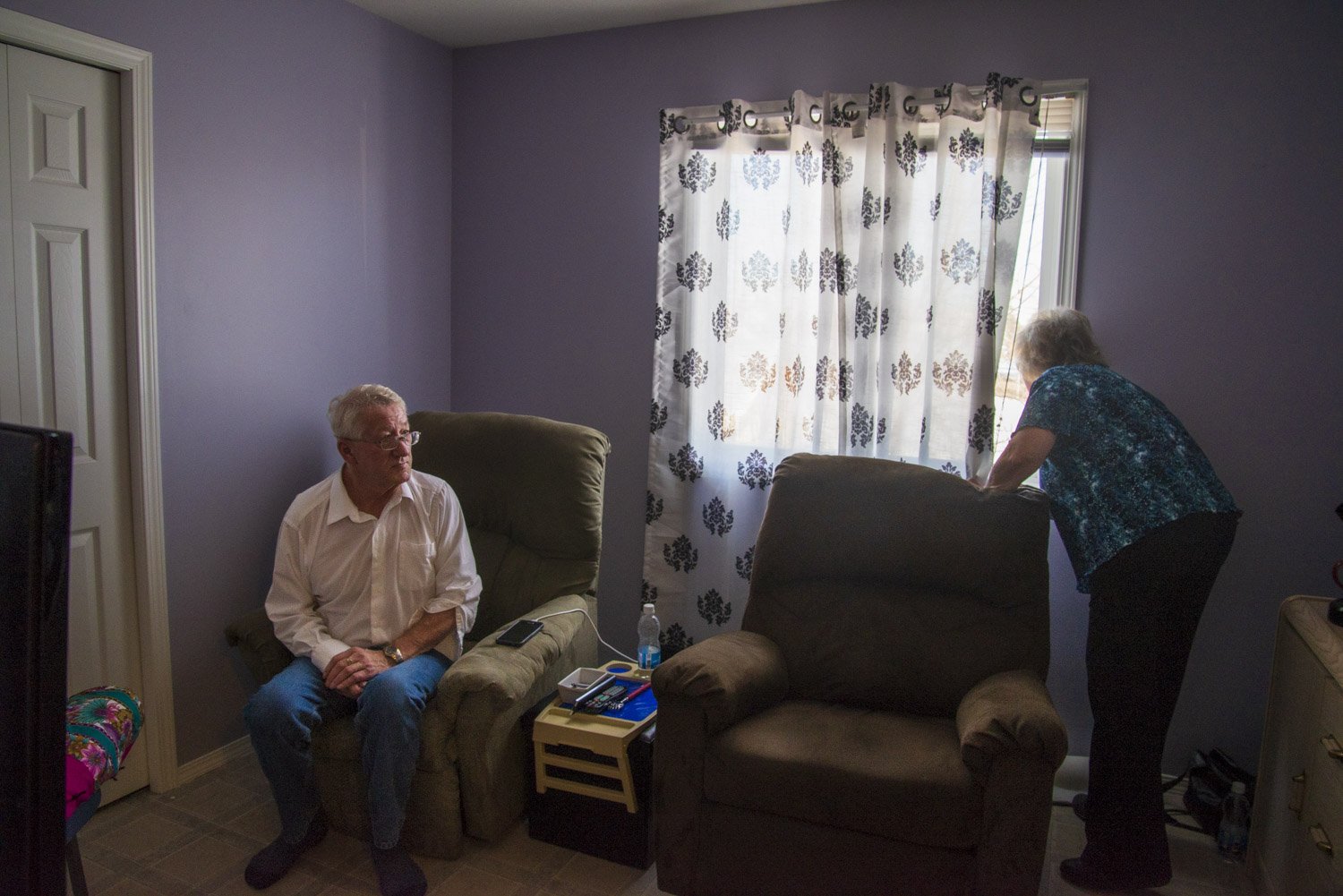
Benita and Gary in their room at the Elder’s Caring Shelter in Grande Prairie. “We thrive at keeping the place healthy and positive: we can increase the chance of people healing. For me to see one of the resident go is like seeing one of your child go.” Benita
Benita and Gary dans leur chambre au Elder’s Caring Shelter à Grande Prairie. “En s’efforçant de garder le refuge sain et positif, nous augmentons les chances de guérison de nos résidents. De voir un résident quitter le refuge, c’est comme de voir un de mes enfants partir.” Benita
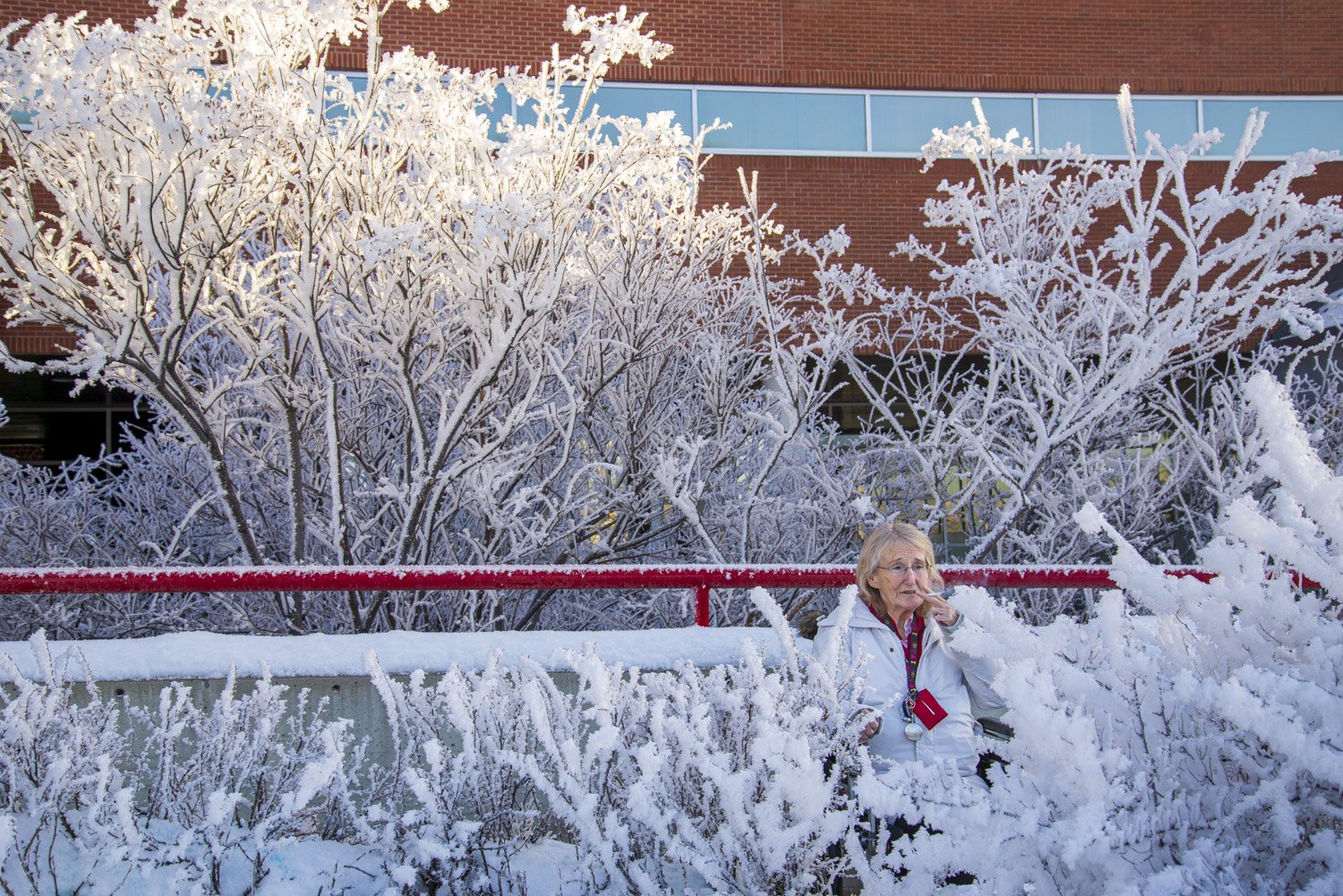
“I try not to let the nerves get to me, because it's downhill from there. I have to take it one day at the time.” Effie
“J’essaie de me calmer les nerfs et pas perdre le moral, sinon je vais me laisser aller. Je prends ca un jour à la fois.” Effie
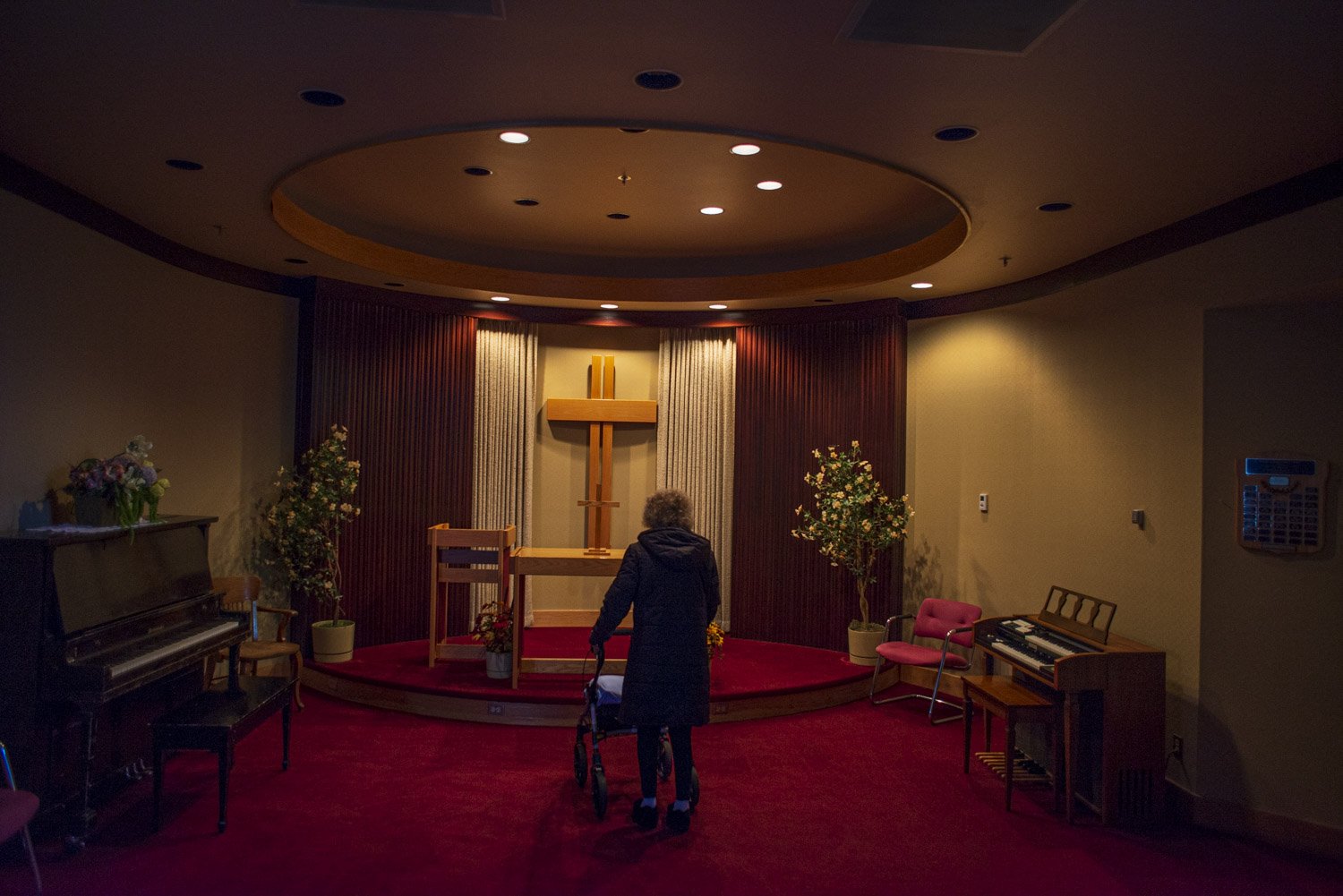
Effie is on a waiting list to be transfer to an affordable senior’s home. She has no idea when and where a place will become available. In the meantime, she goes to the hospital’s church to seek comfort and support. “No matter what happens, I believe God will take good care of me.” Effie
Effie est sur une liste d’attente pour être transférée dans un logis abordable pour ainés. Elle n’a aucune idée quand et ou elle pourra avoir son chez soi. Entre-temps, elle visite l’église de l’hôpital pour y trouver réconfort et soutien. “Peu importe ce qui arrivera, je crois que Dieu s’occupera bien de moi.” Effie
Over 65 and Homeless
At least 235,000 Canadians have experienced homelessness in a year. In Canada as many as 50,000 people are estimated to be homeless on any given night with a growing number of these people being seniors and a third of the shelter population being indigenous. Homelessness can include people temporarily staying with friends, relatives or in shelters because they have nowhere else to live and no immediate prospect of permanent housing. With an aging Canadian population -senior’s population is expected to grow by 68% by 2026- more elderly people are at risk of experiencing some degree of homelessness in the future. In less than 10 years, the senior population staying at emergency shelters has nearly doubled from 2,244 in 2005 to 4,332 in 2014. Furthermore, the overrepresentation of Indigenous Peoples experiencing homelessness can be seen as a direct consequence of the traumatic impacts of residential schools.*,**
Ainé et Sans-Abris
Au moins 235 000 Canadiens ont connu l'itinérance au cours d'une année. Au Canada, on estime que chaque nuit jusqu'à 50 000 personnes sont des sans-abris dont un nombre grandissant sont des ainés, et le tiers de la population dans les refuges sont issue des Premières Nations. L'itinérance peut se vivre par une personne qui reste temporairement chez un ami, un parent ou dans un refuge parce qu'elle n’a pas d'autre endroit où vivre et aucune perspective immédiate de logement permanent. Avec le vieillissement de la population canadienne (on s'attend à ce que la population des aînés augmente de 68% d'ici 2026) un plus grand nombre de ces personnes risquent de connaître un certain degré d'itinérance dans l'avenir. En moins de 10 ans, la population d’ainé séjournant dans les refuges d'urgence a presque doublé, passant de 2 244 en 2005 à 4 332 en 2014. Par ailleurs, la surreprésentation des Premières Nations vivant en situation d’itinérance peut être vue comme une conséquence directe des effets traumatiques des pensionnats autochtones. *,**
*Stephen Gaetz, Erin Dej, Tim Richter, & Melanie Redman (2016): The State of Homelessness in Canada 2016. ** Canadian Institute for Health Information (CIHI, 2017).